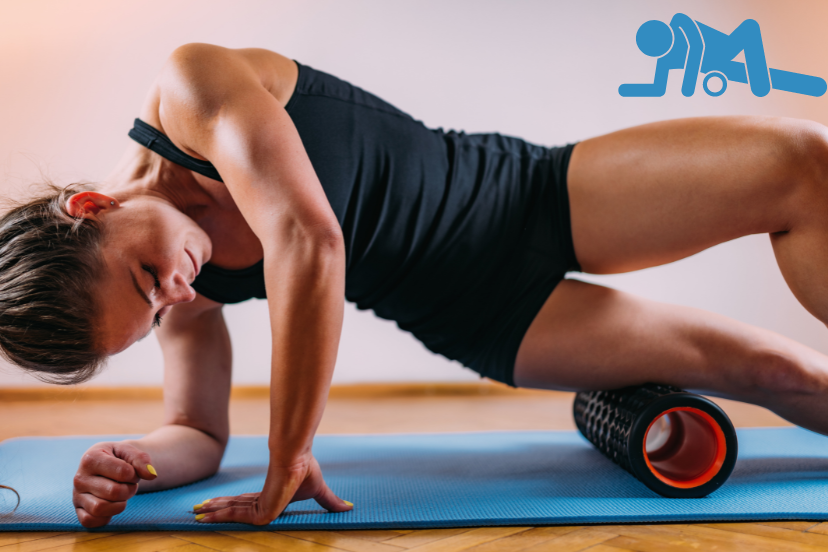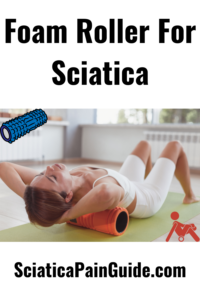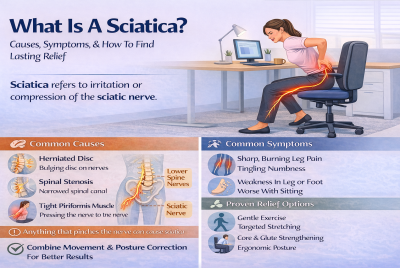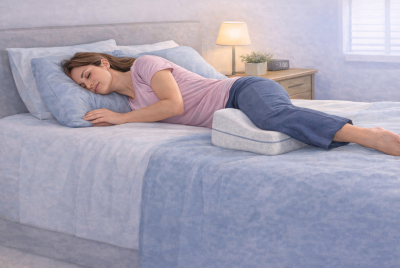Foam Roller For Sciatica
Discover the benefits of using a foam roller for sciatica relief. Alleviate pain, release tension, and promote healing with targeted exercises. Learn the best types, sizes, and techniques to maximize benefits and avoid worsening symptoms. Your guide to smart, effective foam rolling is here! As someone who has experienced the challenges of sciatica firsthand, I understand the frustration and discomfort it can bring. Finding effective methods to alleviate sciatic nerve pain is crucial for improving your quality of life. In this article, I will share valuable insights and suggestions on how a foam roller can be a game-changer in managing sciatica. So let’s dive in and discover the benefits, techniques, and precautions of using a foam roller for sciatica relief.
Introduction To Foam Roller For Sciatica
Debilitating sciatic nerve pain can limit your daily activities and negatively impact your overall well-being. Traditional treatments such as medications and physical therapy may provide temporary relief but don’t always address the root cause. That’s where a foam roller comes in handy.
Understanding Sciatica
Sciatica refers to the radiating pain that originates from the sciatic nerve, which extends from the lower back through the hips and down to each leg. It is often caused by a herniated disc, spinal stenosis, or even muscle imbalances. The resulting pain can range from mild discomfort to sharp, shooting sensations.
Causes Of Sciatica
Sciatica can be caused by various factors, including herniated discs, spinal stenosis, muscle imbalances, and even pregnancy. Herniated discs occur when the soft center of a spinal disc protrudes through a crack in the outer layer, irritating the nearby nerves. Spinal stenosis refers to the narrowing of the spinal canal, putting pressure on the nerves. Muscle imbalances, such as tightness or weakness in specific muscles, can lead to improper alignment and nerve compression. Pregnancy-related sciatica occurs due to the pressure exerted on the sciatic nerve by the growing uterus. Understanding the underlying cause of sciatica is crucial in developing an effective treatment plan tailored to the individual’s specific condition.
Symptoms Of Sciatica
Sciatica symptoms can vary in intensity and location, but they typically involve pain that radiates along the sciatic nerve path. Common symptoms include persistent lower back pain, sharp shooting pain that extends from the lower back through the buttocks and down the leg, numbness or tingling in the leg or foot, and weakness in the affected leg. Coughing, sneezing, or sitting for prolonged periods can worsen the pain. The severity of symptoms can range from mild discomfort to debilitating pain that hinders daily activities. It’s important to note that symptoms may differ depending on the underlying cause of sciatica, such as a herniated disc, spinal stenosis, or muscle imbalances.
Foam Rolling For Sciatica
Overview OF Foam Roller For Sciatica
A foam roller is a cylindrical tool made of dense foam that can help release muscle tension and promote flexibility. When used correctly, it can target the affected areas, including the lower back and hips, providing relief from sciatica pain.
Is Foam Rolling Good For Sciatica?
Foam rolling can relieve some people suffering from sciatica by loosening tight muscles and improving mobility. It targets the piriformis muscle, often contributing to tense sciatic pain. However, foam rolling isn’t a cure-all and may not help everyone. Always consult a healthcare professional for an accurate diagnosis and personalized treatment plan, as improper foam rolling techniques could exacerbate your condition.
Benefits Of Using A Foam Roller For Sciatica
Using a foam roller for sciatica offers several benefits that can significantly aid in pain relief and promote overall well-being. Here are some key benefits:
Increased Blood Flow And Healing
Foam rolling stimulates blood circulation in the affected muscles, which can accelerate the healing process. Improved blood flow delivers essential nutrients and oxygen, helping to reduce inflammation and promote tissue repair.
Release Of Muscle Tension And Adhesions
Sciatica often involves tight muscles and adhesions that contribute to pain and discomfort. Foam rolling applies pressure to these areas, helping to release tension, break up adhesions, and alleviate muscle tightness.
Pain Reduction And Discomfort Relief
By targeting the muscles surrounding the sciatic nerve, foam rolling can provide relief from sciatica pain. It helps to relax and loosen tight muscles, reducing the pressure on the nerves and alleviating discomfort.
Improved Flexibility And Range Of Motion
Regular foam rolling can enhance flexibility by stretching and lengthening muscles. Increased flexibility reduces muscle imbalances and improves overall mobility, alleviating sciatica symptoms and preventing future flare-ups.
Restoration Of Proper Alignment
Foam rolling promotes proper spinal alignment and pelvic stability, which are crucial for relieving sciatic nerve compression. By addressing muscle imbalances and restoring alignment, foam rolling can help alleviate the underlying causes of sciatica.
Prevention Of Future Sciatic Flare-Ups
Incorporating foam rolling into your routine can help prevent future episodes of sciatica. It strengthens and supports the muscles surrounding the sciatic nerve, reducing the risk of nerve impingement and subsequent pain.
Convenience And Cost-Effectiveness
Foam rollers are affordable and readily available for home use. They offer a convenient and cost-effective way to manage sciatica symptoms without relying solely on expensive treatments or therapies.
Remember to consult with a healthcare professional before starting any new exercise or self-care regimen. They can provide personalized guidance and ensure that foam rolling is safe and suitable for your specific condition.
Foam Roller For Sciatica Pain
Using a foam roller for sciatica pain requires proper technique and positioning to effectively target the affected muscles and alleviate pain.
How To Use A Foam Roller For Sciatica
Here’s a step-by-step guide on how to use a foam roller for sciatica:
- Choose the Right Foam Roller: Select a foam roller with a medium density that provides enough firmness to target the muscles without causing excessive discomfort.
- Positioning: Sit on the ground with the foam roller placed perpendicular to your body. Position it under the affected area, such as the lower back or hips, where you feel sciatic pain.
- Engage Core Muscles: Engage your core muscles to stabilize your body and maintain balance throughout the exercise.
- Apply Pressure: Gradually shift your weight onto the foam roller, allowing it to apply gentle pressure to the targeted area. Start with a moderate amount of pressure and adjust as needed to a level that is comfortable yet effective.
- Rolling Technique: Slowly roll back and forth over the foam roller, using your arms and legs to control the movement. Focus on the muscles surrounding the sciatic nerve, such as the glutes, piriformis, and lower back.
- Target Tight Spots: When you encounter areas of tightness or discomfort, pause and hold the position for a few seconds to allow the pressure to release and the muscle to relax.
- Breathe and Relax: Remember to take deep breaths and consciously relax your muscles throughout the exercise. Relaxing promotes a deeper release and enhances the benefits of foam rolling.
- Duration: Aim to spend about 1-2 minutes on each area, gradually increasing or decreasing the time depending on your comfort level and the intensity of your symptoms.
- Consistency: Consistency is key. Incorporate foam rolling into your routine at least a few times per week to experience the long-term benefits. However, listen to your body and adjust the frequency based on your individual needs.
Always Consult Healthcare Professional
Remember to consult with a healthcare professional if you have any concerns or if foam rolling exacerbates your symptoms. They can provide specific guidance and ensure foam rolling is appropriate for your condition.
Precautions And Safety Measures
While foam rolling can be incredibly beneficial, it’s important to exercise caution. Avoid rolling directly on the spine and bony areas. If you experience severe pain or discomfort during foam rolling, stop immediately and consult a healthcare professional.
Foam Roller Exercises For Sciatica
Several foam roller exercises can specifically target sciatic nerve pain. These include the piriformis stretch, glute bridge, and spinal twist. Incorporating these exercises into your routine can help alleviate pain and improve mobility.
Best Foam Roller Exercises For Sciatica
Foam roller exercises can effectively target the muscles associated with sciatica, providing relief and promoting healing. Here are some of the best foam roller exercises for sciatica:
Piriformis Stretch
Sit on the foam roller with one foot crossed over the opposite knee. Gently lean forward and roll back and forth, targeting the piriformis muscle. This stretch helps alleviate tension in the piriformis, which can contribute to sciatic nerve compression.
Glute Bridge
Lie on your back with your feet flat on the ground and the foam roller positioned under your sacrum. Lift your hips off the ground, squeezing your glutes, and roll back and forth. This exercise targets the glute muscles, promoting their strength and flexibility.
Spinal Twist
Lie on your back with your knees bent and feet flat on the ground. Place the foam roller perpendicular to your body. Lower your knees to one side while keeping your upper body stable, then roll back to the starting position. Repeat on the other side. This exercise helps release tension in the lower back and hips.
Hamstring Rollout
Sit on the foam roller with your legs extended in front of you. Roll back and forth from the glutes to just above the knees, targeting the hamstring muscles. This exercise helps release tightness in the hamstrings, which can contribute to sciatic nerve pain.
IT Band Release
Lie on your side with the foam roller positioned under the outer thigh. Roll from the hip to just above the knee, targeting the IT band. This exercise helps release tension in the IT band, which can alleviate pressure on the sciatic nerve.
Remember to perform each exercise slowly and with control, focusing on areas of tightness and discomfort. Start with gentle pressure and gradually increase intensity as tolerated. Consult with a healthcare professional or a certified fitness trainer for proper form and guidance specific to your condition.
Foam Rolling Routine For Sciatica Relief
Developing a regular foam rolling routine can be highly beneficial for sciatica relief. Here’s a recommended foam rolling routine that targets the muscles surrounding the sciatic nerve:
- Warm-Up: Begin with a few minutes of light aerobic exercise or dynamic stretching to warm up the muscles and prepare them for foam rolling.
- Lower Back: Lie on your back with the foam roller positioned horizontally under your lower back. Roll slowly up and down, focusing on any areas of tension or discomfort. Spend about 1-2 minutes on this area.
- Glutes: Sit on the foam roller with one ankle crossed over the opposite knee. Shift your weight to the side of the crossed leg and roll back and forth, targeting the glute muscles. Spend about 1 minute on each side.
- Piriformis: Sit on the foam roller with one foot crossed over the opposite knee. Tilt your weight towards the crossed leg and roll back and forth, targeting the piriformis muscle. Spend about 1 minute on each side.
- Hamstrings: Sit on the foam roller with both legs extended in front of you. Roll back and forth from the glutes to just above the knees, focusing on any tight or tender spots. Spend about 1-2 minutes on this area.
- IT Band: Lie on your side with the foam roller positioned under the outer thigh. Roll from the hip to just above the knee, targeting the IT band. Spend about 1-2 minutes on each side.
- Quadriceps: Lie face down with the foam roller positioned under the front of the thigh. Roll from the hip to just above the knee, targeting the quadriceps muscles. Spend about 1-2 minutes on each leg.
- Cool-Down: After completing the foam rolling routine, perform gentle static stretches for the lower back, glutes, hamstrings, and quadriceps to promote relaxation and further release.
Consistency Is Key
Remember to listen to your body and adjust the duration and intensity of each foam rolling exercise based on your comfort level and individual needs. Consistency is key, so aim to incorporate this routine at least three times a week for optimal results.
Additional Tips For Managing Sciatica
In addition to using a foam roller, there are several additional tips that can help in managing sciatica and promoting overall well-being. Consider incorporating the following practices into your routine:
Maintain Good Posture
Practice proper posture while sitting, standing, and walking. Align your spine, engage your core muscles, and avoid slouching to reduce pressure on the sciatic nerve.
Engage In Regular Exercise
Stay active with low-impact exercises such as walking, swimming, or cycling. Regular exercise helps strengthen the muscles surrounding the sciatic nerve, improve flexibility, and reduce the risk of future flare-ups.
Apply Heat Or Cold Packs
Apply a heating pad or a cold pack to the affected area to help alleviate pain and reduce inflammation. Experiment with both methods to determine which one provides more relief for your specific condition.
Practice Stress-Reducing Techniques
Chronic stress can exacerbate sciatica symptoms. Incorporate stress-reducing techniques such as yoga, meditation, deep breathing exercises, or mindfulness to promote relaxation and pain management.
Maintain A Healthy Weight
Excess weight can put additional strain on the spine and exacerbate sciatica symptoms. Maintain a healthy weight through a balanced diet and regular exercise to alleviate pressure on the sciatic nerve.
Avoid Prolonged Sitting Or Standing
Take breaks and avoid sitting or standing for long periods. If your job requires extended sitting, ensure that you have ergonomic support and take regular stretch breaks to prevent muscle tightness and nerve compression.
Seek Physical Therapy
Consider consulting with a physical therapist specializing in sciatica. They can design a personalized exercise program, provide manual therapy techniques, and offer additional guidance for managing your condition.
Stay Hydrated
Drink an adequate amount of water daily to keep your muscles and spinal discs hydrated. Proper hydration supports overall spinal health and can help alleviate sciatica symptoms.
Remember, each individual’s experience with sciatica can vary, so it’s important to find a personalized approach that suits your needs. If your symptoms persist or worsen, it’s crucial to consult with a healthcare professional for a comprehensive evaluation and tailored treatment plan.
Best Foam Roller For Sciatica

The best foam roller for sciatica pain typically features a medium-density surface that balances support with flexibility. Textured rollers can provide a more targeted massage, focusing on the piriformis muscle, which often contributes to sciatic pain. Some people prefer vibrating foam rollers for deeper muscle relaxation. However, individual needs vary, and what works for one person may not be effective for another. Consult a healthcare professional for a specific recommendation tailored to your condition. If you are new to foam rolling, you may also benefit from a session with a physical therapist to learn proper techniques and avoid worsening your symptoms.
What Size Foam Roller For Sciatica?
For sciatica relief, a medium-length foam roller around 18 to 24 inches often works well. This size offers enough surface area to target larger muscles like the glutes and hamstrings while still being manageable for more focused work on the piriformis muscle. Consult a healthcare professional or physical therapist to determine the best size and type of foam roller for your specific condition.
Can Foam Rolling Make Sciatica Worse
Foam rolling can worsen sciatica if you use incorrect techniques or target the wrong muscles. Over-aggressive foam rolling may lead to further irritation or inflammation, exacerbating your symptoms. Additionally, sciatica can have multiple causes, including disc herniation or spinal stenosis, that foam rolling won’t address. Therefore, it’s crucial to consult a healthcare professional for an accurate diagnosis and a personalized treatment plan. If advised to use a foam roller, consider working with a physical therapist to ensure you’re performing the techniques correctly and effectively not to worsen your condition.
When To Consult A Healthcare Professional
While foam rolling and other self-care techniques can provide significant relief for many individuals, it’s essential to consult a healthcare professional if your symptoms persist or worsen. They can provide a comprehensive evaluation, diagnose any underlying conditions, and recommend a tailored treatment plan.
Frequently Asked Questions (FAQs)
Can a foam roller completely cure sciatica?
While a foam roller can provide relief and aid in managing sciatica, it may not completely cure the underlying condition causing the pain. It is recommended to seek professional medical advice for a comprehensive treatment plan.
Are there any side effects of using a foam roller for sciatica?
When used correctly, foam rolling is generally safe. However, improper technique or excessive pressure may cause discomfort or exacerbate existing symptoms. It’s crucial to follow proper guidelines and consult with a healthcare professional if you experience any adverse effects.
How often should I foam roll for sciatica relief?
To experience the benefits of foam rolling, aim for at least three sessions per week. Consistency is key to achieving long-term relief. However, listen to your body and adjust the frequency based on your individual needs.
Does foam rolling help nerves?
Foam rolling primarily targets muscles and fascia, not nerves directly. It can relieve muscle tension, potentially reducing pressure on pinched nerves. However, improper technique may exacerbate nerve issues. Consult a healthcare professional for a tailored treatment plan.
Can pregnant individuals use a foam roller for sciatica relief?
Pregnant individuals should exercise caution when using a foam roller. It is advisable to consult with a healthcare professional or a prenatal specialist before incorporating foam rolling into their routine.
Extra FAQs Related To Foam Roller For Sciatica
Can I use a foam roller for sciatica?
Yes, you can use a foam roller for sciatica to alleviate muscle tension and improve mobility. However, consult a healthcare professional for a proper diagnosis and tailored treatment plan. Incorrect usage may worsen your symptoms.
Can foam rolling worsen sciatica symptoms?
Foam rolling should not worsen sciatica symptoms when performed correctly and within the recommended guidelines. However, if you experience increased pain or discomfort, it’s essential to discontinue use and consult with a healthcare professional to determine the cause.
Is foam rolling OK for sciatica?
Yes, foam rolling can be beneficial for sciatica. It helps release muscle tension, improve flexibility, increase blood flow, and relieve sciatic nerve pain when used correctly and in conjunction with other treatment methods.
Foam Roller For Sciatica – Conclusion
Managing sciatica pain is a journey that requires patience and a multifaceted approach. Incorporating a foam roller into your routine can be a valuable tool for relieving discomfort and promoting healing. Remember to prioritize safety, listen to your body, and consult with a healthcare professional if needed. You can regain control over your life and enjoy a pain-free future by taking proactive steps.
Remember, each individual’s experience with sciatica can vary, so it’s essential to find a personalized approach that suits your needs.
Disclaimer
Please note that the information provided in this article is for informational purposes only and should not replace professional medical advice. If you’re experiencing sciatica pain or any health concerns, it’s advisable to consult a healthcare professional for proper diagnosis and treatment.
👉 Explore more:





